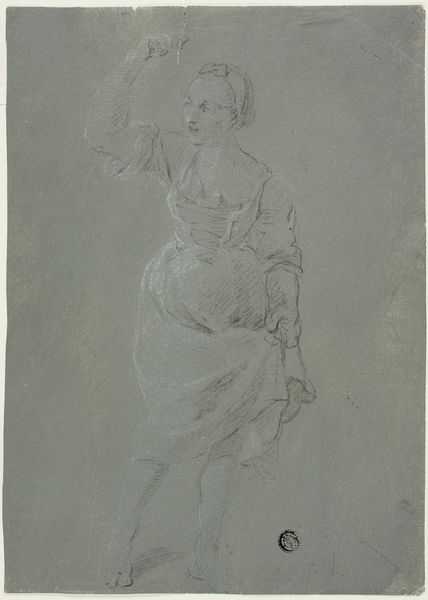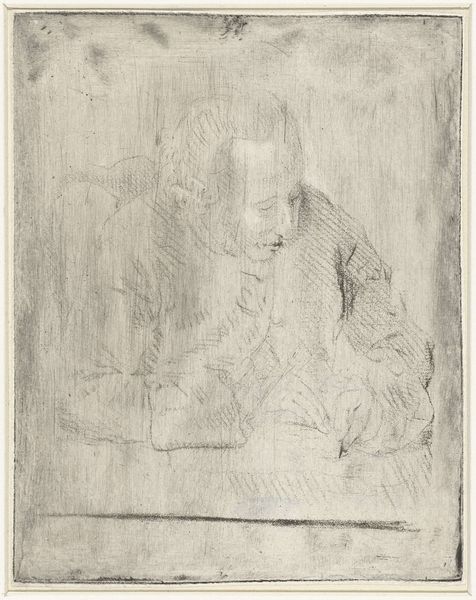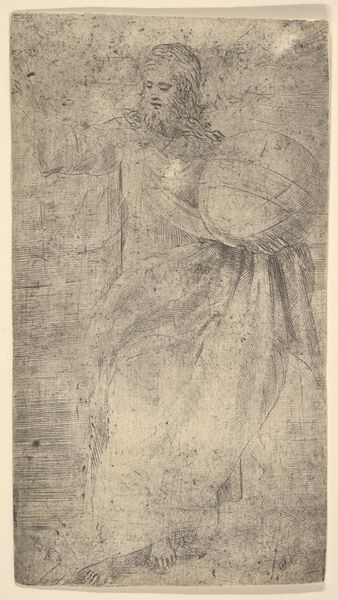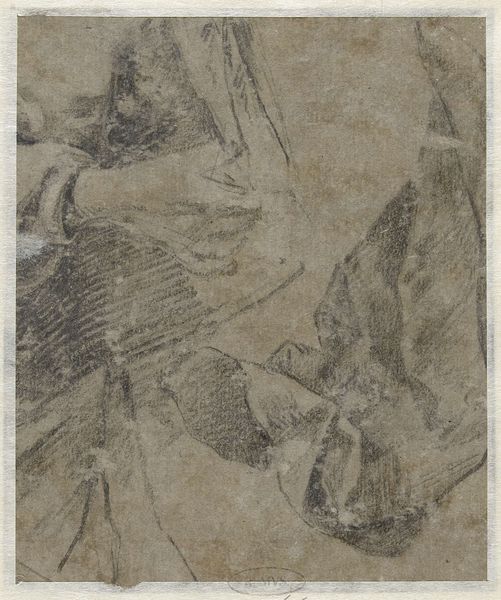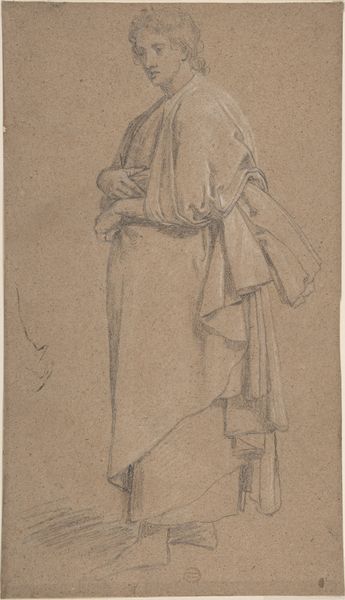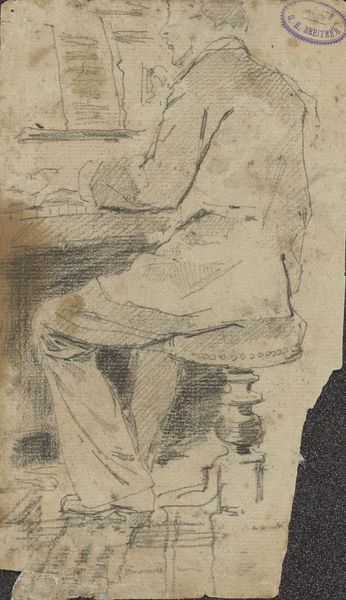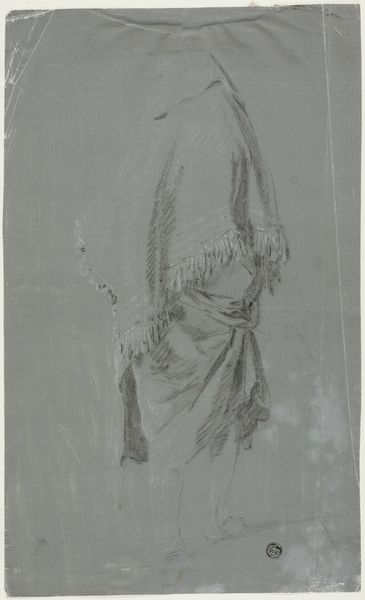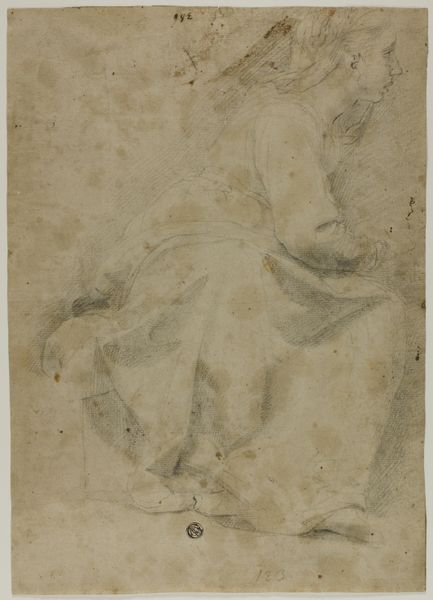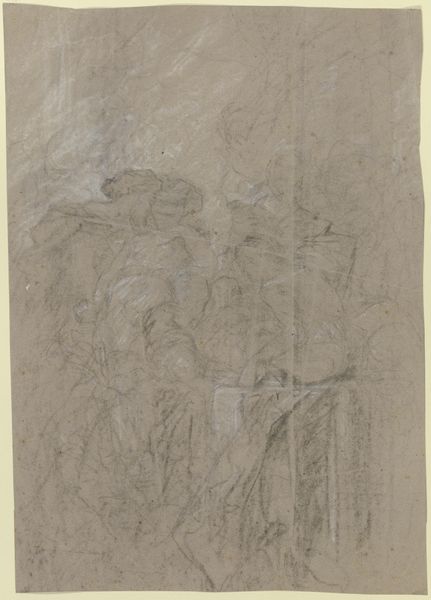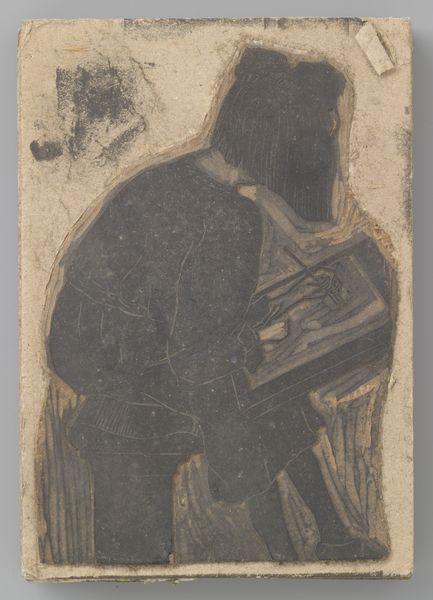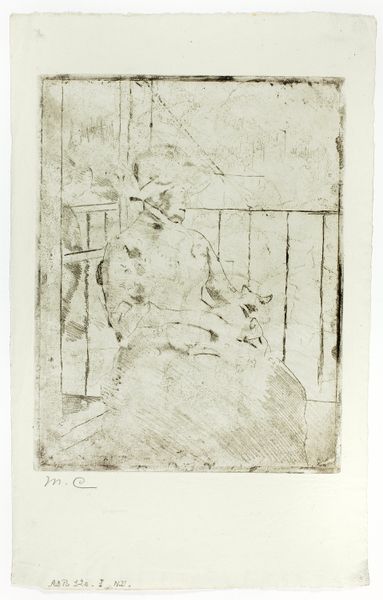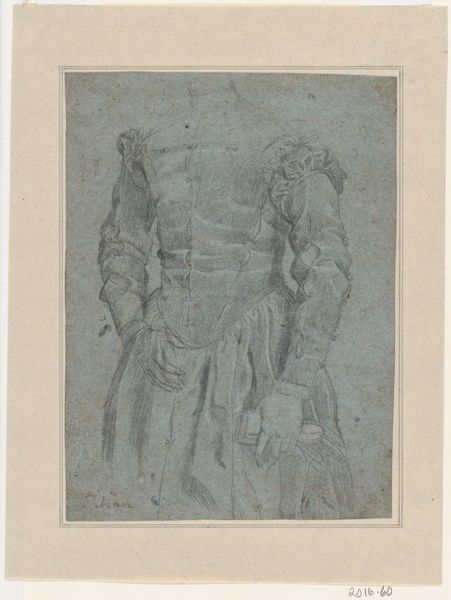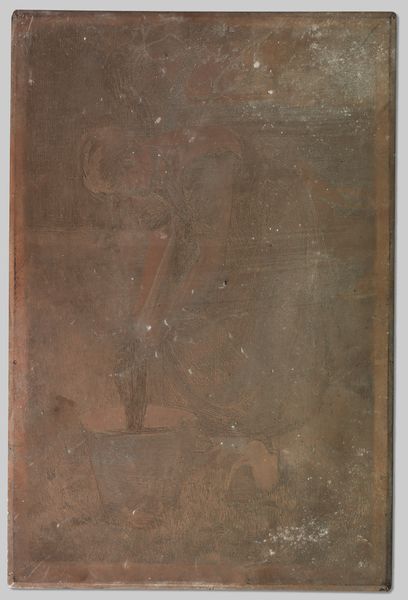
drawing, print, paper, pencil, chalk
#
portrait
#
drawing
# print
#
pencil sketch
#
figuration
#
paper
#
pencil
#
chalk
#
nude
Dimensions: 390 × 264 mm
Copyright: Public Domain
Curator: Before us is "Seated Woman," a work attributed to Pierre-Jacques Volaire, executed in pencil and chalk on paper. The Art Institute of Chicago holds this intriguing drawing in its collection. Editor: My first impression? There's a ghostliness to this. It feels incomplete, fragile, a fleeting glimpse of a person barely captured. Curator: It does have an ethereal quality. Notice the way Volaire uses delicate lines, creating soft contours. This almost feels like an exercise, a preparatory study rather than a finished portrait. In its cultural context, this technique can serve as a symbolic approach to expressing humility. Editor: I agree, it is interesting to consider this piece in relation to portraiture of the time and whether Volaire wanted to show, perhaps, the economic status or other social-class signifiers for women. Or does the very medium point to something in particular? Why choose pencil and chalk rather than paint or ink? Was it cost? Lack of availability? Maybe to reach a broader audience through printed reproductions? Curator: The choice of medium could certainly speak to access and affordability. It democratizes image-making to a degree. The pencil, even then, was much more ubiquitous than fine paints. But it could also represent a certain artistic ethos. Perhaps the artist sought a more direct, unpretentious style. It's worth pondering that this is more likely to reach a much larger population in the format of a print than a painting. Editor: You know, the position of the woman with her torso exposed strikes me as an interesting case for discussing social convention at the time this was produced. How was her portrayal perceived in its era, and what messages does it convey to contemporary audiences? And in looking so downward cast—what is that an icon for? Curator: It’s difficult to ascertain precisely how contemporary audiences received it without further documentation, though it does fall within the general study of "the nude" in art which had gained considerable acceptance within artistic academies by this period, so some degree of open-mindedness, particularly among certain viewers, may be fairly presumed. Now her downcast expression—I wonder, too, about that, it seems the cultural narrative around women in that particular context leans so far into demureness, this visual element might be interpreted accordingly as representative of such concepts? Editor: This conversation makes the figure almost seem more fully present. It’s wonderful to be able to peel back the layers and look into what symbols or conventions she might embody. Curator: Precisely. Each glimpse deepens our perception, connecting our present with those echoes from long ago.
Comments
No comments
Be the first to comment and join the conversation on the ultimate creative platform.
